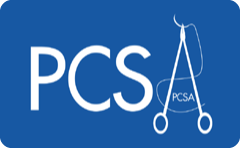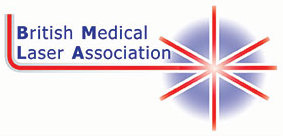 Download this information as a PDF
Download this information as a PDF
What is Minoxidil?
Minoxidil is a medication used primarily to treat hair loss, specifically androgenetic alopecia, which includes male and female pattern baldness. It is available over-the-counter in topical forms such as liquids and foams, commonly in 2% and 5% concentrations. Minoxidil was originally developed as a treatment for high blood pressure, but its side effect of promoting hair growth led to its repurposing as hair loss treatment.
Historical Background
During clinical trials in the 1970s, researchers discovered that one of its side effects of the tablet version was excessive hair growth, known as hypertrichosis. This unexpected outcome led to further investigation into its potential as a hair loss treatment.
By the 1980s, Minoxidil had been reformulated for topical use to combat hair loss. Minoxidil received approval from the U.S. Food and Drug Administration (FDA) in 1988 as the first drug proven to promote hair regrowth.
How does minoxidil work to promote hair growth?
There have been a few proposed mechanisms to explain the effects of minoxidil on hair growth. We know today that it lengthens and prolongs the anagen (growth) phase of the hair cycle, which decreases hair loss and causes an overall effect of thickening. To be effective, however, minoxidil must be metabolized to minoxidil sulfate. The enzyme responsible for this conversion is present in the skin and the liver. Studies have shown that there is a large variation in the amount of the enzyme in the skin of different people and even in different areas of the scalp in the same person. This explains why topical minoxidil is more effective for some people and less for others. When taken orally, however, the conversion to minoxidil sulfate is done in the liver, which creates more consistent minoxidil sulfate, thereby making it more effective.
Minoxidil sulfate relaxes smooth vascular muscle, promoting vasodilation, which in turn decreases blood pressure. This also causes increased blood flow to the scalp, which is one of the mechanisms of action on the hair follicle. Minoxidil sulfate has also been shown to stimulate the production of certain growth factors, which may explain the increase in hair proliferation and hair cell multiplication. However, the exact mechanism of action of minoxidil is still not fully understood.
Formulations
The original topical minoxidil formulations include concentrations of 5% (recommended for men) and 2% (recommended for women, to decrease the possibility of facial hair growth). It is recommended that patients apply it twice a day to the scalp. These formulations still exist today, though women may have better results if they use the 5% concentration once a day. The most common side effects of the topical application are skin irritation, redness, and dryness. This is due to the presence of propylene glycol in the formula. Propylene glycol has a greasy feeling to it, and it can be a skin irritant.
To decrease this side effect, a foam formulation was developed, and it is overall better accepted by patients. It has no propylene glycol, so it is less greasy and less irritating. It is available in a 5% concentration for men and women. Another advantage of the foam preparation is that the foam melts when in contact with body heat, so most of the product reaches the skin. When the liquid formulation is used, a lot of it is wasted because it stays on the hair instead of reaching the scalp, where it needs to be.
In recent years, there has been a significant increase in the prescription of the oral formulation of minoxidil. When taken by mouth, minoxidil is usually more effective than when used topically, though side effects such as dizziness, tachycardia (fast heart rate), and increased facial and body hair tend to be more pronounced than when used topically.
Effectiveness
There is a plethora of review articles documenting the effectiveness and safety of both topical and oral minoxidil, and it continues to be a useful tool in the medical management of many types of hair loss, including genetic and auto-immune forms.
How do I apply topical minoxidil?
Topical minoxidil 5% foam should be applied to the scalp twice a day for men and once a day for women. It may be applied to all areas of the scalp, including the temples and the anterior hairline.
Dosage and Considerations
Oral minoxidil is normally used in doses varying from 0.625 mg a day to 5 mg per day. In determining the dose, consideration must be given to the patient’s age and concurrent use of other medications, particularly those for high blood pressure and cardiac arrhythmias, as well as patients with a history of heart failure.
Side Effects and Safety
The most common side effects of topical minoxidil application are redness and irritation of the skin. Rarely, patients have reported headaches, palpitations, and dizziness. Oral minoxidil side effects include palpitations, dizziness, low blood pressure, chest pain, headaches, and swelling of the legs.
Persons with a tendency for irritation of the scalp (psoriasis, seborrheic dermatitis, etc.) are more prone to irritation and redness. Oral minoxidil should be used carefully in older patients and in patients with a history of heart issues.
Combining Minoxidil with Other Treatments
Minoxidil is usually combined with other treatments for hair loss. For the most common genetic hair loss (androgenetic), minoxidil is usually combined with finasteride and or laser therapy. These treatments target the hair follicles differently, so their use in combination is usually more beneficial than when used alone.
Purchasing Minoxidil
In Ireland, 5% topical minoxidil can be purchased without a prescription. Brand name and generic equivalents are available. Oral minoxidil is only available by prescription in Ireland in the generic category.
FAQs
Is Minoxidil permanent?
Minoxidil needs to be used consistently to provide and maintain results. Any gain will be lost once the treatment is stopped. However, a common misconception is that if one uses minoxidil and stops it, the hair loss will worsen. This is not true. The hair loss will resume after stopping and will progress as it would normally without treatment.
Can I comb my hair after applying Minoxidil?
Yes. Minoxidil should be applied to the scalp and not to the hair shaft. Therefore, combing the hair after the application of minoxidil is not a problem.
Can you leave minoxidil on overnight?
Yes, you should. For men, minoxidil should be applied twice a day. For women, once a day. Leaving overnight is not a problem.
What happens if minoxidil touches the face?
It can cause hair growth in these areas. Therefore, women should not touch their face after applying topical minoxidil. Hands should be washed before touching other areas of the body. That being said, the most common reason women have secondary hair growth elsewhere is not inadvertent spillage of the product but instead absorption of minoxidil into the bloodstream, causing hair growth elsewhere other than the scalp
Is minoxidil a steroid?
No, it is not a steroid
Does minoxidil cause pimples?
It can cause irritation on the skin, and it can cause ingrown hairs by stimulating hair growth.
This article is based on information from The International Society of Hair Restoration Surgery (ISHRS): www.ishrs.org
For further information contact:
Dr David Buckley
www.kerryskinclinic.ie
Email This email address is being protected from spambots. You need JavaScript enabled to view it.
Tel 066 7174066
References
Gupta, A. K., Talukder, M., Venkataraman, M., & Bamimore, M. A. (2022). Minoxidil: a comprehensive review. Journal of Dermatological Treatment, 33(4), 1896–1906.
Adil, A., Godwin, M. (2017). The effectiveness of treatments for androgenetic alopecia: A systematic review and meta-analysis. Journal of the American Academy of Dermatology, 77(1), 136-141.
Randolph, M., Tosti, A. (2021). Oral minoxidil treatment for hair loss: A review of efficacy and safety. Journal of the American Academy of Dermatology, 84(3), 737-746














